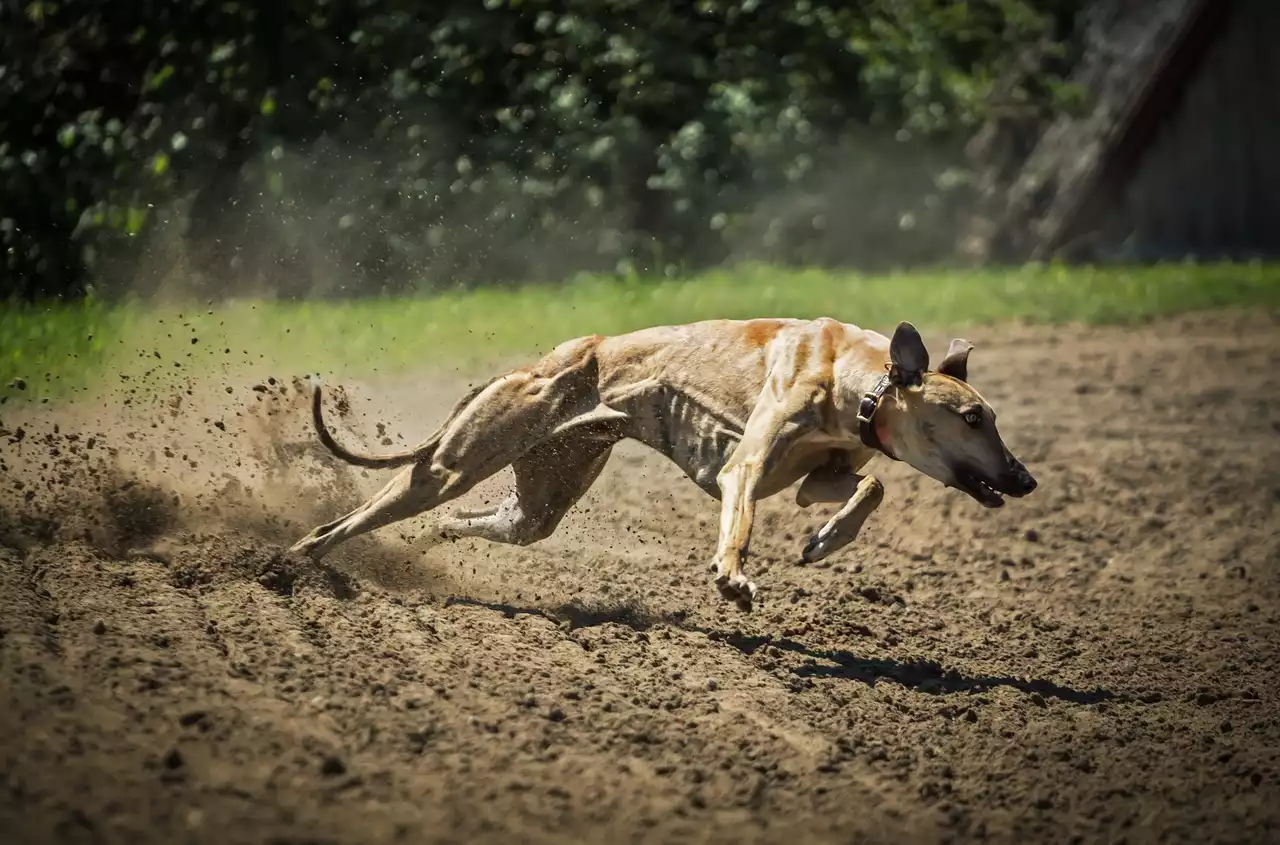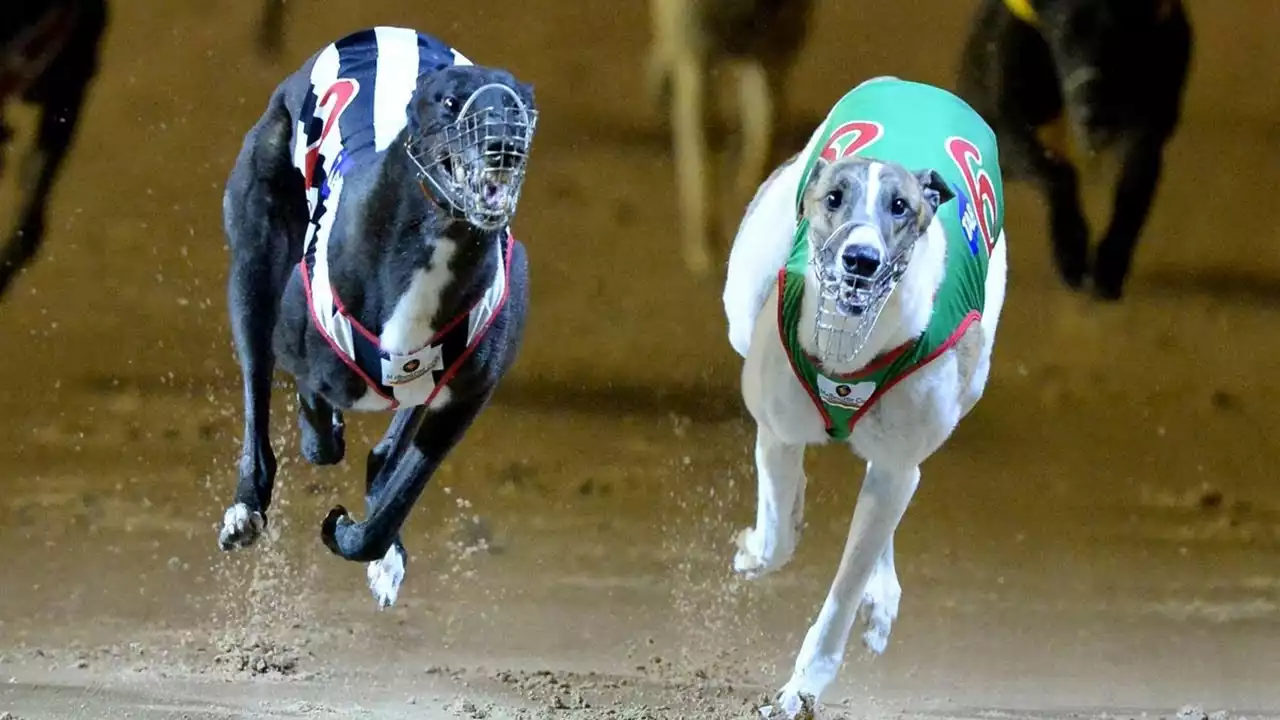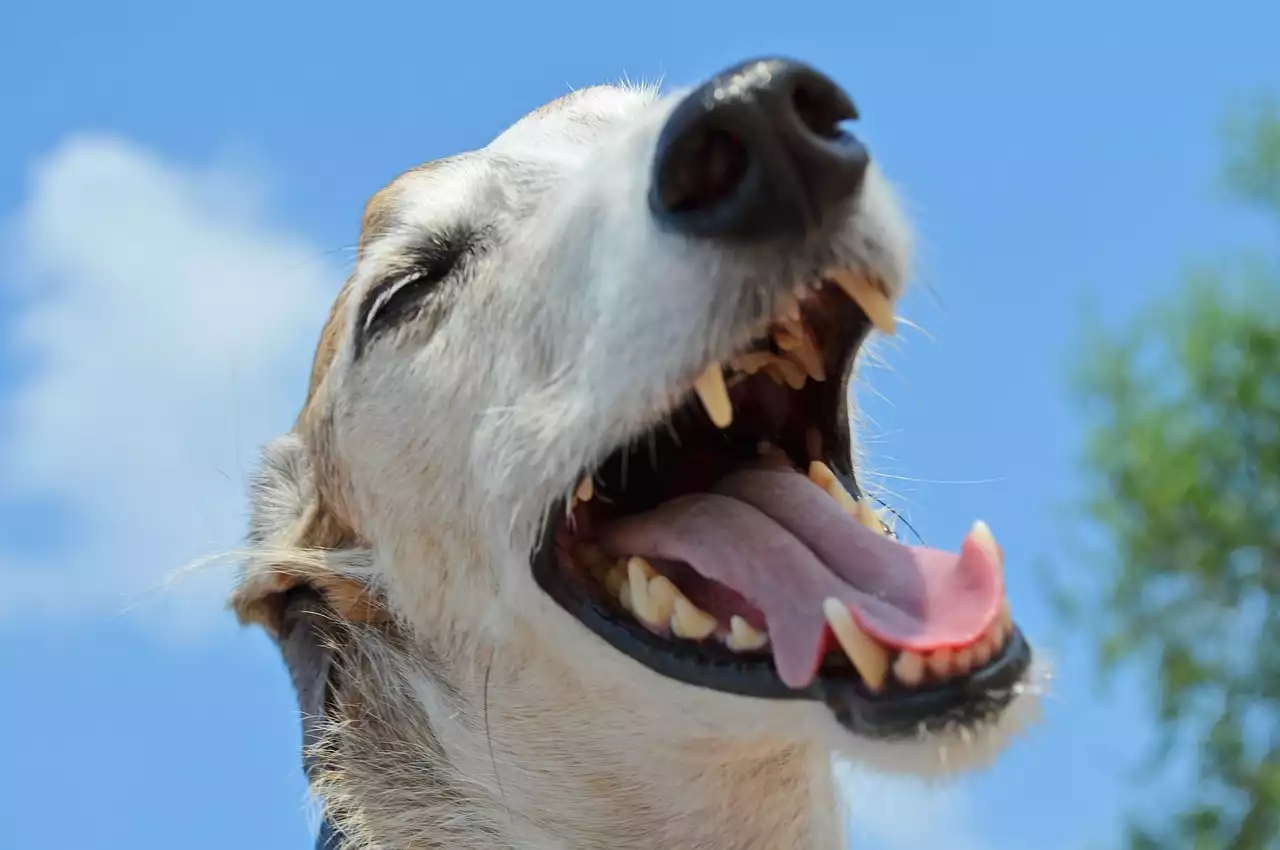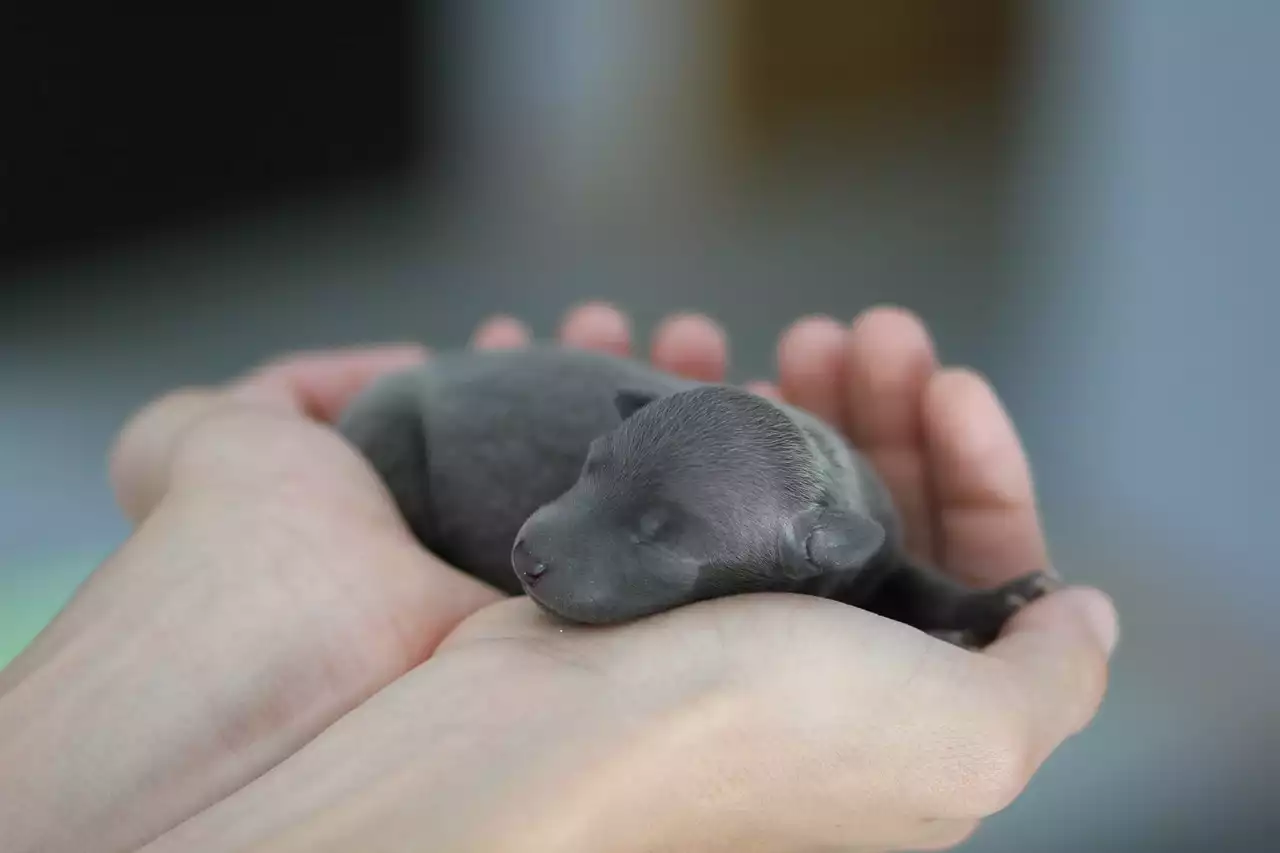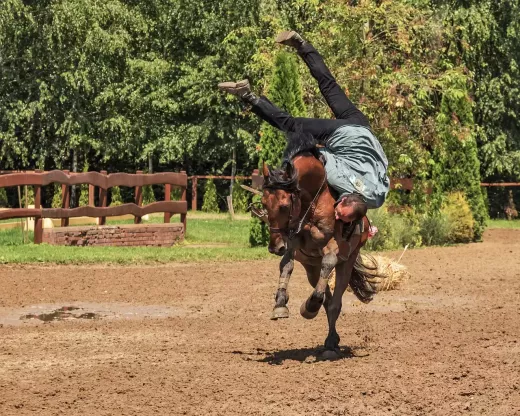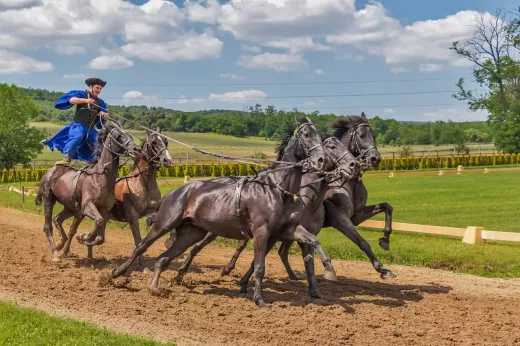The History of Greyhounds
Greyhounds have a long and storied history that dates back thousands of years. They are believed to be one of the oldest known dog breeds and have been depicted in ancient Egyptian and Roman art. These noble creatures were highly prized for their hunting abilities, with their exceptional speed and keen eyesight making them the perfect companions for coursing game. Over time, greyhounds evolved from being hunting dogs to becoming racing dogs, with organized greyhound racing gaining popularity in the early 20th century. Today, greyhound racing is a multi-billion-dollar industry, attracting millions of spectators and bettors worldwide.
Characteristics of Greyhounds
Greyhounds are known for their unique physical and behavioral characteristics. Standing at an average height of 28 to 30 inches at the shoulder and weighing between 60 to 70 pounds, these dogs possess a lean and muscular body built for speed. Their deep chest, long legs, and flexible spine enable them to reach incredible speeds of up to 45 miles per hour in just a few strides. Greyhounds have a short and smooth coat that comes in a variety of colors, including black, white, brindle, fawn, and blue. Their expressive eyes, which can be amber, brown, or black, give them an intelligent and gentle appearance.
In terms of temperament, greyhounds are generally calm, gentle, and affectionate dogs. Despite their racing heritage, they are known to be incredibly laid-back and enjoy lounging around the house. Greyhounds are often referred to as "couch potatoes" due to their love for long naps and relaxation. However, they still possess a strong prey drive and are sight hounds, meaning they are easily stimulated by movement and may chase small animals.
Famous Greyhounds in History
Throughout the history of greyhound racing, there have been several standout greyhounds who have etched their names in the annals of the sport. One such legendary greyhound is Mick the Miller, who achieved a feat that no other greyhound has replicated to this day. Mick the Miller won the English Greyhound Derby, the most prestigious greyhound racing event, three times consecutively in 1929, 1930, and 1931. This incredible achievement solidified Mick the Miller's status as one of the greatest greyhounds of all time.
Another remarkable greyhound is Rapid Ranger, who set the world record for the fastest time over 525 yards in 1998. Clocking in at an astonishing 28.88 seconds, Rapid Ranger showcased his exceptional speed and athleticism, leaving a lasting impression on the greyhound racing community. These are just a few examples of the extraordinary greyhounds that have left an indelible mark on the sport, thrilling audiences with their remarkable talents.
Greyhound Racing and Its Popularity
Greyhound racing has evolved into a popular sport across the globe. In countries like the United States, the United Kingdom, Australia, and Ireland, it attracts large crowds and generates significant revenue through betting. The excitement of watching these graceful dogs compete at incredible speeds, combined with the thrill of wagering, has contributed to the sport's enduring popularity.
Greyhound racing events are typically held at dedicated racetracks, where spectators gather to witness the races firsthand. The atmosphere is electric, with the roar of the crowd and the anticipation of each race adding to the excitement. In recent years, however, greyhound racing has faced increasing scrutiny due to concerns over animal welfare. This has led to the closure of racetracks and a shift towards adopting retired racing greyhounds as pets.
Greyhound Adoption and Rescue Organizations
Greyhound adoption and rescue organizations play a vital role in finding loving homes for retired racing greyhounds. When a greyhound's racing career comes to an end, these organizations step in to provide medical care, rehabilitation, and socialization to prepare them for adoption. Through their efforts, thousands of greyhounds are given a second chance at life as cherished family pets.
Adopting a retired racing greyhound can be a rewarding experience. These dogs are known for their gentle and affectionate nature, making them great companions for individuals and families alike. Greyhounds are typically well-behaved and adapt easily to different living environments, including apartments and houses. Despite their racing background, they are surprisingly low-maintenance dogs that require moderate exercise and a comfortable place to relax.
Caring for a Greyhound as a Pet
When bringing a greyhound into your home, there are a few important considerations to keep in mind. Greyhounds have thin skin and a low body fat percentage, making them more susceptible to extreme temperatures. It is crucial to provide them with adequate protection from both hot and cold weather. Additionally, greyhounds thrive on a balanced diet that includes high-quality dog food and regular veterinary care to ensure their overall health and well-being.
Greyhounds are known for their docile and gentle nature, making them excellent companions for families with children. However, it's important to introduce them to children and other pets gradually, as greyhounds can be sensitive to sudden movements or loud noises. With proper socialization and training, greyhounds can form strong bonds with their human and animal companions.
Greyhound Health and Common Health Issues
As with any breed, greyhounds are prone to certain health issues that potential owners should be aware of. One common health concern is bloat, a condition in which the stomach twists, leading to a potentially life-threatening situation. To minimize the risk of bloat, it is recommended to feed greyhounds smaller meals throughout the day and avoid vigorous exercise immediately before and after meals.
Greyhounds are also susceptible to certain genetic conditions, such as osteosarcoma (bone cancer) and hypothyroidism. Regular veterinary check-ups and open communication with your veterinarian are essential for ensuring the early detection and management of these conditions.
Training and Exercise for Greyhounds
Despite their reputation as racing dogs, greyhounds do not require excessive exercise. They are sprinters, not endurance athletes, and a few short walks or play sessions each day are usually sufficient to keep them happy and healthy. However, it's important to provide mental stimulation through interactive toys, puzzle games, and obedience training. Greyhounds are intelligent dogs who enjoy learning new tricks and commands, making them highly trainable.
When it comes to training, positive reinforcement techniques work best with greyhounds. They respond well to praise, treats, and gentle guidance. Harsh training methods or physical punishment should be avoided, as they can cause fear or anxiety in these sensitive dogs.
Greyhound Myths and Misconceptions
Greyhounds, like any popular breed, are surrounded by myths and misconceptions. One common misconception is that greyhounds require a large amount of exercise. In reality, they are a relatively low-energy breed that prefers lounging around the house. Another myth is that greyhounds are aggressive or hyperactive. On the contrary, greyhounds are known for their calm and gentle nature, making them excellent family pets.
Another misconception is that greyhounds must be kept on a leash at all times. While greyhounds have a strong prey drive, with proper training and socialization, they can be trusted off-leash in safe and controlled environments. It's important to remember that each greyhound is an individual, and their behavior may vary.

